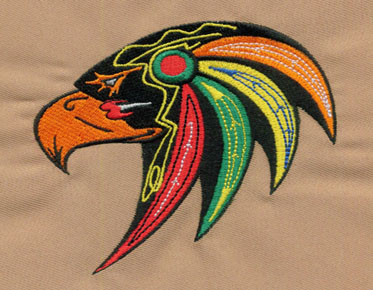What Is The Difference Between Screen Printing And Heat Transfers?
When you need some promotional
garments, try printing on shirts or other garments. You will have a choice
between screen printing or heat transfer. Once you understand the difference, it
will be much easier to decide which option is right for your business. This
content also has some reference value for Eagle digitizing.
Both printing processes involve the
transfer from the machine to the fabric of the garment. But they do it in
different ways. Here's how these two processes work:
The heat transfer
In the heat transfer process, the
combination of heat and pressure applies the image to custom T-shirts and other
clothing. There are two seed types of this process: vinyl and digital heat transfer.
The heat transfer vinyl process
requires a hot press to cut out vinyl lettering and images to create a complete
design. Once the vinyl stencil is designed, the machine presses the stencil
onto the fabric to print the design on it.
Digital subtypes work more like
typical computer printing. Digital heat transfer machines use solvent inks to
print clothing designs onto high-quality paper. The machine then presses
patterned paper onto the fabric to complete the transfer process.
Screen printing
The screen printing process begins
with the screen. This is why screen printing is often called screen printing.
First, machine operators cut the mesh into the shape of the costume design to
create a template for it. After that, the screen press uses a scraper to apply
ink to the screen and place it on top of the garment. The machine then applies
stencils and ink to the garment to transfer the design. Each screen can only
handle one ink color at a time, so designs that require multiple colors require
multiple screens on the machine to be designed for transfer.
Advantages and disadvantages of heat
transfer
The heat transfer process has many
advantages, but it also has some disadvantages. Heat transfer printing is
suitable for printing clothing in small batches, usually less than 500 pieces.
It prints high-resolution images in multiple colors well and can easily adapt
to complex designs. It is also environmentally friendly and cost-effective to
set up.
However, this printing method is not
suitable for large orders and can make the fabric feel stiff underneath the
design. It also works poorly on dark fabrics, and the design can break down
over time.
Advantages and disadvantages of screen
printing
Like hot pressing, screen printing has
its advantages and disadvantages. Screen printing is suitable for large orders
of clothing, over 500 pieces, for both dark and light fabrics. This printing
technique results in brightly colored designs that last longer than most hot
press designs. It also creates fabrics that are softer and more flexible than
hot press printing.
However, the screen printing process
can only handle two or three colors at most at a time. It is also more
expensive than heat transfer printing because it requires more equipment and
chemicals, and the process can be time-consuming and confusing at first.
How do you choose between screen
printing and hot pressing?
The truth about screen printing and
heat transfer printing is that both methods are better than the other. Each is
better suited to certain order sizes and the number of colors and image types.
Ultimately, choosing the right printing method comes down to which printing
technology suits your design needs. To choose the best approach for your
design, ask yourself the following questions:
How many items would you like to print
with this design? If the answer is below 500, select heat transfer. If more
than 500, choose screen printing.
How many colors do you need for your
design? Screen printing works best with three or fewer colors. If your design
requires multiple colors, choose heat transfer.
How complex is your design? Heat
transfer printing works best for complex designs, while screen printing works
best for simple designs.
Ask yourself these questions about
your design, and pay attention to your answers. The answer helps you determine
which printing method to use.

